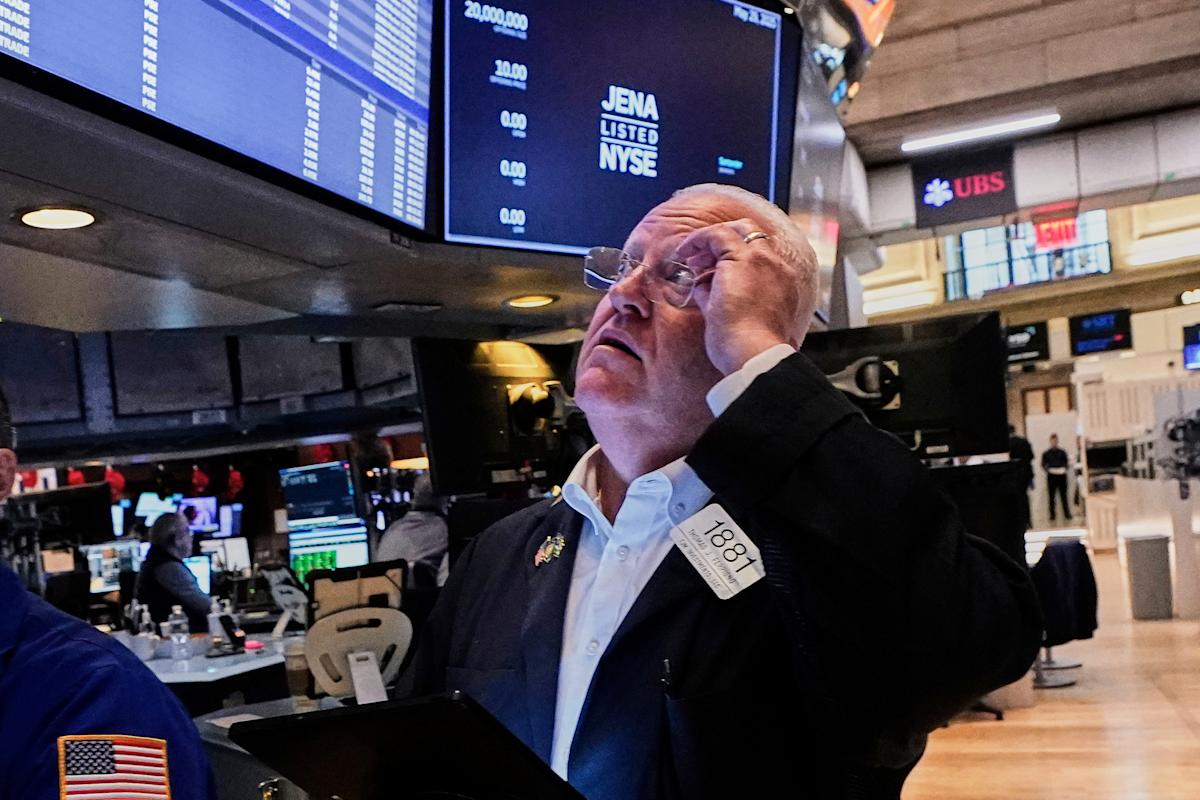
US stock futures experienced declines on Friday, reflecting investor anxiety due to heightened US-China tensions and anticipation surrounding the upcoming PCE (Personal Consumption Expenditures) inflation data. Dow Jones Industrial Average futures (YM=F) fell by 0.4%, while S&P 500 futures (ES=F) and Nasdaq 100 futures (NQ=F) each dropped by 0.5%. This adjustment comes after a day of gains, whereby major stock indices concluded Thursday’s trading positively.
In recent statements, President Trump accused China of having “totally violated its agreement with us,” intensifying the already strained relations between these two economic powerhouses. Trade discussions between the US and China appear to have hit a snag, described by Scott Bessent of Fox News as “a bit stalled.” Treasury Secretary Steven Mnuchin noted that a conversation between Trump and Chinese President Xi Jinping might be necessary to rejuvenate negotiations, especially as the nations continue to clash over issues related to chip exports and visa access.
Adding to the complexities of these trade disputes, a legal uncertainty emerged on Thursday when a US appeals court paused a ruling on Trump’s global tariffs. This decision grants the White House until the following Monday to challenge the ruling, while Trump’s team is exploring alternative pathways to implement tariffs, potentially adding more turbulence in the already shaky economic landscape.
Investor sentiment has been further impacted by the upcoming PCE inflation report, which is closely monitored by the Federal Reserve as a key indicator of economic health. Analysts are particularly focused on how tariffs might influence price pressures. The April PCE price index could provide crucial insights regarding consumer spending and wage growth, elements that are directly interlinked with the ongoing trade conflicts; however, many analysts speculate that the effects of tariffs may not be reflected in this immediate data.
Despite the rocky start on this Friday, May has proven to be a strong month for US stocks thus far, with the S&P 500 index poised for a monthly gain of over 6%, the Dow projected to rise about 4%, and the Nasdaq anticipated to see nearly a 10% increase driven by a rebound in technology stocks. These gains illustrate the inherent volatility in the market but hold promise for longer-term recovery.
Turning to overseas markets, the situation mirrored that of the US, with declines evident in Asia-Pacific indexes following rising US tensions. Japan’s Nikkei 225 experienced a 1.1% drop, influenced by heightened inflation fears, while South Korea’s Kospi fell by 0.9%, reflecting a cautious approach by investors amidst an impending presidential election.
In contrast to this overall sentiment, companies like Costco have reported mixed results, with its stock remaining flat in premarket trading after announcing earnings that narrowly missed revenue expectations. Meanwhile, Gap’s stock faced a sharp decline of over 14% following disclosures of anticipated increased costs due to tariffs. Although Gap reported better-than-expected sales, the specter of up to $300 million in tariff-related expenses loomed large, prompting investor anxiety.
This turbulence exemplifies the broader challenges the market faces. As we await the PCE inflation data, the focus remains on how external factors, particularly US-China relations and tariff implications, will shape economic forecasts and influence market trends. The balance between pushing for trade resolutions and managing domestic inflationary pressures remains a delicate one, with significant impacts likely across various sectors.
Looking ahead, it will be essential for investors to keep a close eye on developments regarding US-China negotiations as well as the outcomes of forthcoming economic reports, including the PCE index. These factors will be pivotal in shaping market strategies in the near term. The interplay of global trade relations and domestic economic indicators paints a complex picture, but also provides opportunities for those prepared to navigate through uncertainty.
In these volatile times, understanding the broader context of economic relations is crucial. Stock futures are just one indicator of larger economic currents that investors must consider, making it more important than ever to stay informed and responsive to ongoing changes in the international landscape. As we move deeper into the economic year, one can only hope for resolutions that lead to stability and growth in both US and global markets.
Source link









